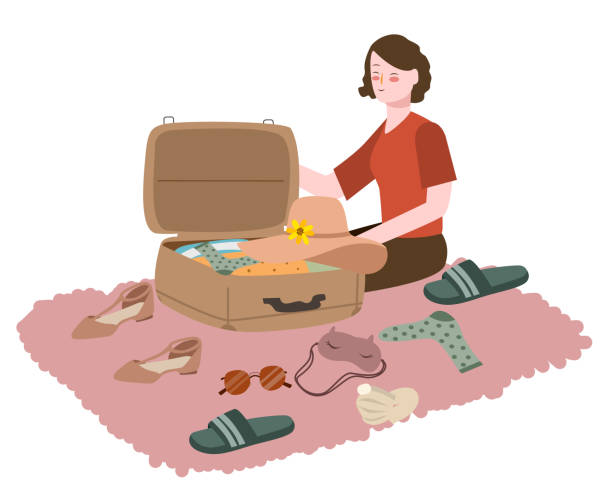
Photo from ten years ago today, December 12, 2015:

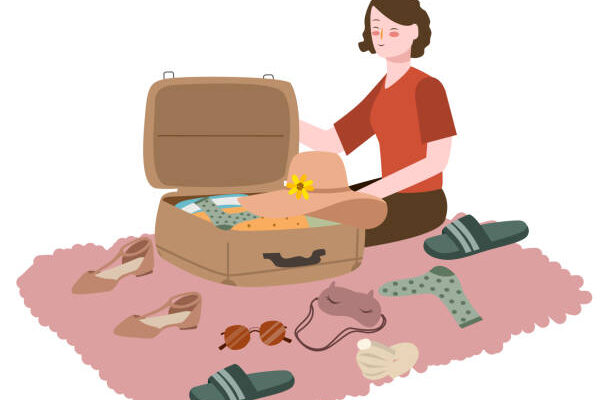

Photo from ten years ago today, December 12, 2015:



There’s a particular sensation that settles in during the final stretch of a long cruise, a blend of anticipation and nostalgia, mixed with that subtle itch to move on to whatever comes next. As we inch closer to Saturday, when we’ll disembark in Brisbane and catch our flight to Auckland, I find myself perched somewhere between savoring these last few days at sea and mentally sorting through what lies ahead. It always amazes me how, even after weeks of cruising, the end seems to arrive in a sudden whoosh, as if the ship picks up emotional speed as well as physical momentum.
The flight to Auckland is 3½ hours, compared to the 90-minute drive afterward, the one that will take us through unfamiliar territory to Kaiwaka, our newest temporary “home,” though that word takes on a funny shape after so many years of living nomadically. We’ve settled into countless rentals, guesthouses, and countryside cottages around the world, but each new landing still carries that flutter of curiosity: What will the view look like out the kitchen window? Will the bed be comfortable enough? Will the laundry situation be workable? These things matter more than guidebooks ever admit.
And yet, despite the familiar uncertainties, there’s an eagerness growing in both of us. The cruise has been fantastic in many ways, relaxing, entertaining, indulgent in ways that land-life isn’t, but after this many days at sea, we begin to crave the ordinary again. For some passengers, the idea of leaving the ship seems almost tragic, but for us, it means the return of simple routines that have somehow become luxuries in themselves. I’m oddly excited for grocery shopping, for finding the local market aisles where the produce is freshest and discovering which New Zealand brands I’ll grow attached to during this stay. There’s comfort in the small rituals of settling in.
We’ve already started the mental packing, though the suitcases remain half-emptied for now. A cruise has a way of scattering your belongings into every corner of the cabin, chargers here, shoes there, a stack of paperwork that we’ll dispose of, somehow keeps migrating across the desk. I can already picture myself doing that pre-departure sweep, opening drawers I forgot existed, folding and refolding clothes more times than is necessary, as if the precision of packing could somehow make the transition smoother. After all these years, I know it never does, but it gives me a sense of order amid the change.
Kaiwaka will be entirely new for us. We’ve never stayed there, never driven its winding roads, never watched its sunsets from whatever angle the house allows. There’s something refreshing about that blank slate. Instead of returning to familiar rentals in Marloth Park, where I know which pan overheats or which lamp flickers, we get to learn it all anew. And perhaps that’s why, even after a lovely cruise, I’m ready to step off the gangway and lean into the next chapter.
Tom, ever the more dedicated cruiser between us, has mentioned several times how quickly these 47 nights have passed, how each port and sea day blended into a kind of easy pattern. And he’s right. But even he seems ready now for a dining room that isn’t shared with hundreds of fellow passengers, for nights without announcements, and for mornings when the only schedule is the one we choose.
By Saturday afternoon, the ship will be behind us, the laughter, the meals, the gentle rocking at night, and ahead will be the cool, familiar air of New Zealand, the promise of new scenery, and the long-awaited chance to stretch out in a home-like space again. As always, we’re grateful for the journey, for the comforts onboard, for the ability to move from one life to another with relative ease.
But more than anything, we’re ready. Kaiwaka, here we come.
Ten key facts about Airlie Beach:
Be well.
Photo from ten years ago today, December 11, 2015:

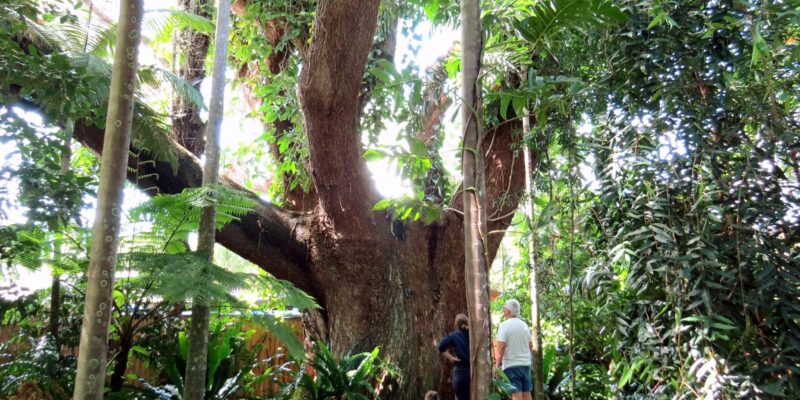

Note: Today’s photos are from our 2015 visit to the Cairns Botanic Gardens. If you’d like to see more of our posts from Cairns, including photos from the Great Barrier Reef, please use our “search box” on the right side of our main page and type in “Cairns.”
Today, our ship is tendering passengers to Cairns, Australia, giving everyone a window until the 4:00 pm “back-on-board” deadline to explore this vibrant tropical city. Under ordinary circumstances, Cairns is the kind of place that tugs at you to come ashore, with its casual outdoor cafés, wide esplanades, and that unmistakable Queensland humidity that clings to your skin like a warm embrace. But after our extended stay here back in 2015, three full months of exploring every corner we could reach by foot, shuttle, or rental car, we both knew, without hesitation, that again, we’d stay onboard today.

It wasn’t that we didn’t love Cairns. Quite the opposite. Some places leave you saturated with memories, so full that returning doesn’t feel necessary. Cairns carries a certain nostalgia for us: the lazy afternoons wandering along the Esplanade, pausing to watch kids splash around the lagoon after school; the early mornings when the air felt soft and forgiving, and we’d stroll down quiet streets searching for photo ops and the day trips to the rainforest and Kuranda, the reef tours, and the quiet little moments that shaped that season of our lives. Those experiences were rich enough that we’ve never felt compelled to chase a “better version” of them.
And honestly, the logistics alone were enough to discourage even the slightest flicker of temptation to go ashore. Tendering in a busy port always adds layers of waiting and uncertainty. There were long queues to get tender tickets to board the tenders. Tom read a Facebook post about the pushing and shoving to get the tender tickets, which led to a passenger being pushed to the ground. Good grief.
Neither of us felt like spending the day in long queues, first to get off the ship, and then later for the shuttle from town back to the dock, only to queue once again for the tenders returning to the ship. My knee is improving day by day, and although I’m grateful for every bit of progress, I’m still not interested in testing it on long, uneven walks in hot, sticky weather if there’s no real motivation behind it.

There was also nothing in the immediate area calling our names. Cairns is lovely, but its charm lies in wandering, dining, and partaking in activities we’ve already done, absorbed, and appreciated. I didn’t feel any tug of curiosity, none of that familiar spark that usually pushes us into an impromptu adventure. We both felt content to stay put, letting the day unfold peacefully rather than in the stop-and-start of tender days.
In a way, I think our decision reflects how our travel style has evolved over the years. Early in our journey, we felt a pressure to see everything, to step ashore in every port, to make the most of every chance. There was a fear of missing something, an impulse to collect experiences like souvenirs. But somewhere along the way, perhaps after enough wanderlust has been satisfied or enough corners of the world become familiar, you permit yourself not to “do it all.”
Now, especially on longer cruises, we often favor these quiet, shipbound days when the decks are nearly empty, and the usual bustle gives way to a rare stillness. There’s a peacefulness that settles in when most passengers are ashore. You can find seats in every lounge, claim a quiet table near a window, and savor a leisurely cup of tea without interruption.

We’re also only a few days away from disembarking the ship completely, and the anticipation of settling into our new routine in Kaiwaka adds a layer of contentment to everything. I find myself craving simple, ordinary things: grocery shopping, cooking meals in a real kitchen, doing laundry with detergent whose scent I actually like. It’s funny how long-term travel rewires your sense of what feels exciting. Right now, the idea of standing in my own kitchen in New Zealand, chopping vegetables, stirring a pot, and opening the fridge to a wide array of dining options is most appealing.
We’ll likely spend part of the afternoon catching up on emails, perhaps sitting at the café with our laptops and watching the tenders shuttle back and forth. Maybe we’ll wander out to the deck railing later to look at the coastline we once knew so well, admiring it with a fondness that doesn’t require us to set foot on land.

Sometimes, the best travel days aren’t the ones filled with motion and activity. Sometimes, they’re the ones when you permit yourself to stay still, to appreciate where you are, where you’ve been, and where you’re headed next. Today is one of those days.
Here are ten key facts about Cairns, Australia:
Be well.
Photo from ten years ago today, December 10, 2015:



As this 47-night cruise winds down and Saturday creeps closer, I find myself caught between two familiar worlds, the floating, ever-moving pace of ship life and the grounded comfort of ordinary days back on land. Tom, of course, could stay on a ship much longer, lulled by the promise of the next port, the next shared dinner table, the next story from a fellow wanderer. For me, the thrill of cruising has always been there, just a little quieter than his, humming beneath the surface rather than bubbling over. And now, as we approach the end of this voyage, my excitement is aimed squarely at the moment we step off the ship and settle into everyday life in Kaiwaka, New Zealand.
Oddly enough, it’s the most mundane things I’m craving: grocery shopping, cooking meals exactly the way we like them, and yes, even doing laundry. I’m yearning to fill a shopping cart with vegetables that haven’t sat in a ship’s refrigerator for a month, to choose my own spices instead of relying on chefs who think the word “seasoning” is interchangeable with “grease.” I’m picturing the tiny local markets in New Zealand, the focus on sustainability, and the beautiful meat, dairy, and produce.

And laundry, whoever thought laundry would feel exciting? But here I am, daydreaming about rewashing every single item that has gone through the ship’s wash-and-fold service, doused in whatever cheap detergent they buy in bulk. I can almost smell the clean, gentle fragrance of environmentally friendly, hypoallergenic soap, the kind that’s easy to find in eco-focused New Zealand. There’s something grounding about reclaiming the small routines of life, especially after such a long stretch of schedules designed by someone else, meals cooked by someone else, and detergents chosen by, well, certainly not me.
This isn’t to say the cruise hasn’t been wonderful. Far from it. It’s been a journey stitched together with the familiar warmth of old friends and the unexpected joy of new ones. Seeing Louise and Danie in Cape Town felt like picking up a conversation that never truly paused. Visiting Rita and Gerhard in Bali, especially after her long recovery from her foot injury, brought a swell of gratitude, as if life was reminding us that friendships endure across continents, ailments, and time. Onboard, we found comfort in familiar faces too: Ulla’s bright smile, Michelle’s easy laugh, Sheryl’s steady presence. And then there were the countless new friends, Diana and Peter with their gentle humor, Salli and Barbara whose stories filled so many evenings, and others whose names we may forget eventually, but whose kindness will follow us long after.
As for the ports of call, most were familiar from past cruises, with little déjà vu moments scattered along the route. But we still managed to step off the ship in several new locations, though my knee injury during the first week slowed us down more than I’d anticipated. It was frustrating at first, seeing the excursions listed, the places we weren’t going—but in time, I settled into a rhythm of doing what I could. I learned to appreciate the walks I could take around the ship, even after we moved to the more distant cabin. Perhaps the extra steps were an accidental blessing, a bit of physical therapy woven into each day.
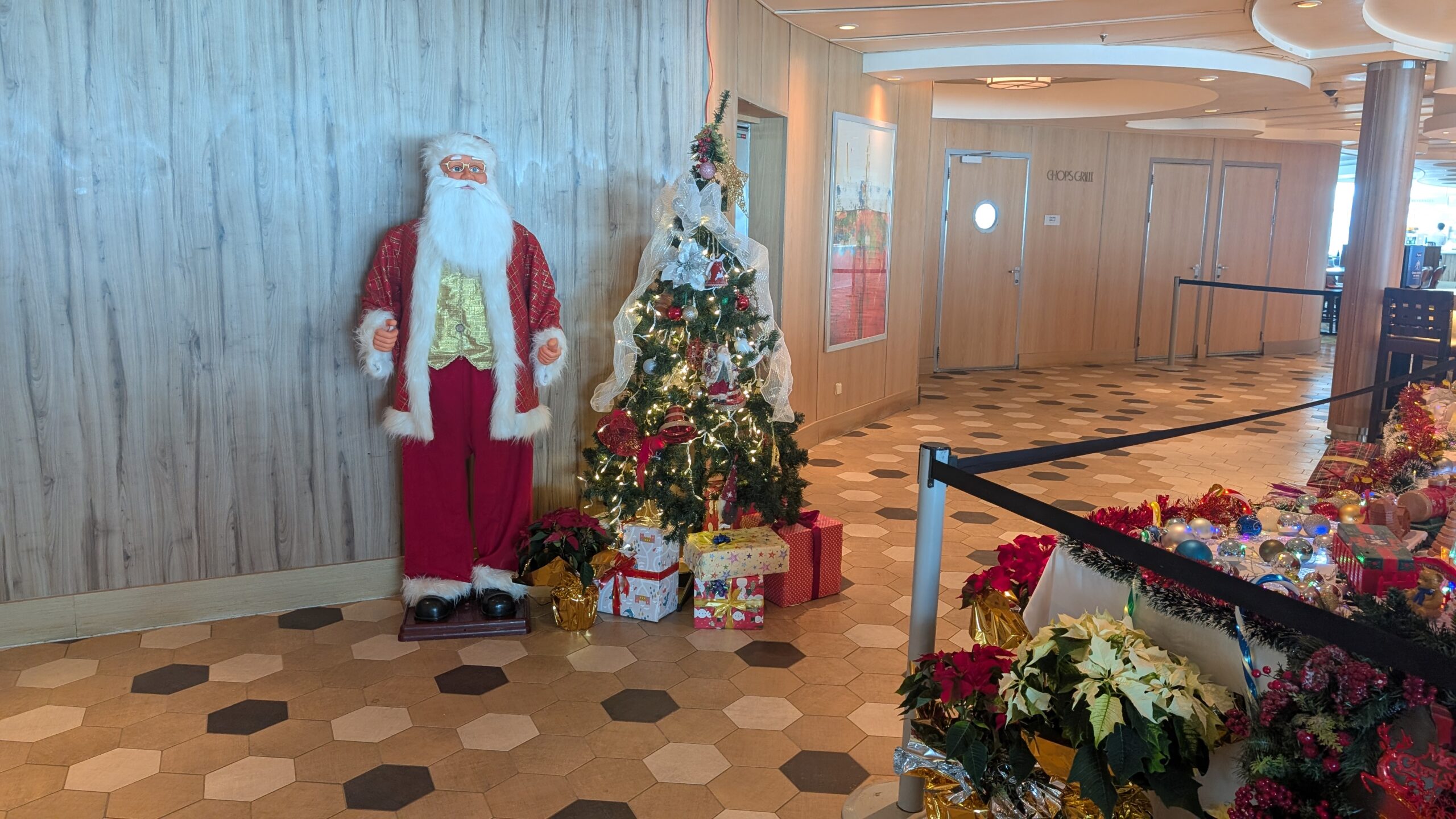
One of the highlights, as always, was the shared dinners in the Main Dining Room. Night after night, we sat at large tables with travelers from every corner of the world, swapping stories, comparing notes on the itinerary, laughing over the quirks of cruise life. In these last weeks, we even started having the occasional lunch in the dining room, stretching out the social time a little more. There’s something comforting about a table full of new and old friends, sharing a meal as the ocean hums outside.
Still, as lovely as it has all been, I’m ready. Ready for the solidity of land under my feet. Ready for quiet mornings in Kaiwaka, for home-cooked meals, for laundry that smells like sunshine and eucalyptus instead of industrial soap. Ready to return to the life we’ve built, one ordinary day at a time.
Be well.
Photo from ten years ago today, December 9, 2015:



We have decided to stay on the ship today while we’re docked in Darwin, Australia. Having been here several times over the years, the sense of urgency to disembark and explore simply wasn’t there. We’d walked through the town on our last visit, slowly weaving along the waterfront, pausing in little patches of shade under the sparse trees, and feeling that familiar Darwin blend of heavy heat and easy charm. It’s a pleasant enough place, and one we’ve appreciated in the past, but today, neither of us felt compelled to push ourselves out into the sweltering conditions “just because.”
Declining the ship’s tours was easy. The popular “crocodile jumping” boat tour, a favorite among first-timers, held no appeal for us. After years spent in South Africa, where we’d quietly observed enormous crocodiles sunning themselves on the banks of the Crocodile River, creatures far more massive and awe-inspiring than the ones that leap for dangling meat in the tourist video, it’s hard to feel the same excitement for a staged spectacle. Those moments in the wild, when you’re close enough to feel the rumble of nature but still respectfully distant, set the bar impossibly high. And so, the idea of a choreographed thrill couldn’t compare.
As for the five or six-hour walking tours, they were out of the question from the start. Even in ideal weather, such long treks are more than I would attempt these days, especially after the lingering knee troubles. Add Darwin’s infamous heat and humidity, the kind that wraps around you like a wet blanket the moment you step off the gangway, and the decision became obvious. There’s no point in forcing ourselves to endure discomfort on a day when enjoying the quiet on the ship is much more appealing.
From our cabin balcony, we observed the pace of the day: enthusiastic passengers rushing ashore in the morning, full of energy and resolve, only to reappear a short time later looking wilted and dazed.
By noon, the ship felt unusually still, as if it too were trying to conserve its energy against the oppressive heat outside. Many guests who remained on board seemed to settle into the same slow, languid pace we had adopted, drifting between the coolness of the Promenade Cafe or a quiet corner in the library. There’s something peaceful about staying behind in port when so many passengers are ashore. Hallways become quiet, elevators arrive instantly, and the crew moves about with a more relaxed cadence, unburdened by the full intensity of a sea day.

In a way, these port days spent onboard often feel like stolen chapters of rest within an otherwise full itinerary. Travelers sometimes forget that it’s okay, necessary, even, to choose stillness over sightseeing. Long-term travel teaches you that not every destination has to be explored again and again, especially when you’ve already walked those streets, taken those photos, and made those memories.
So we’re here, contentedly tucked away, watching the day unfold from our floating home. And rather than feeling as though we missed something, we think the opposite, grateful for the quiet, for the comfort, and for the gentle reminder that sometimes the best choice is the simplest one.
Be well.
Photo from ten years ago today, December 7, 2015:
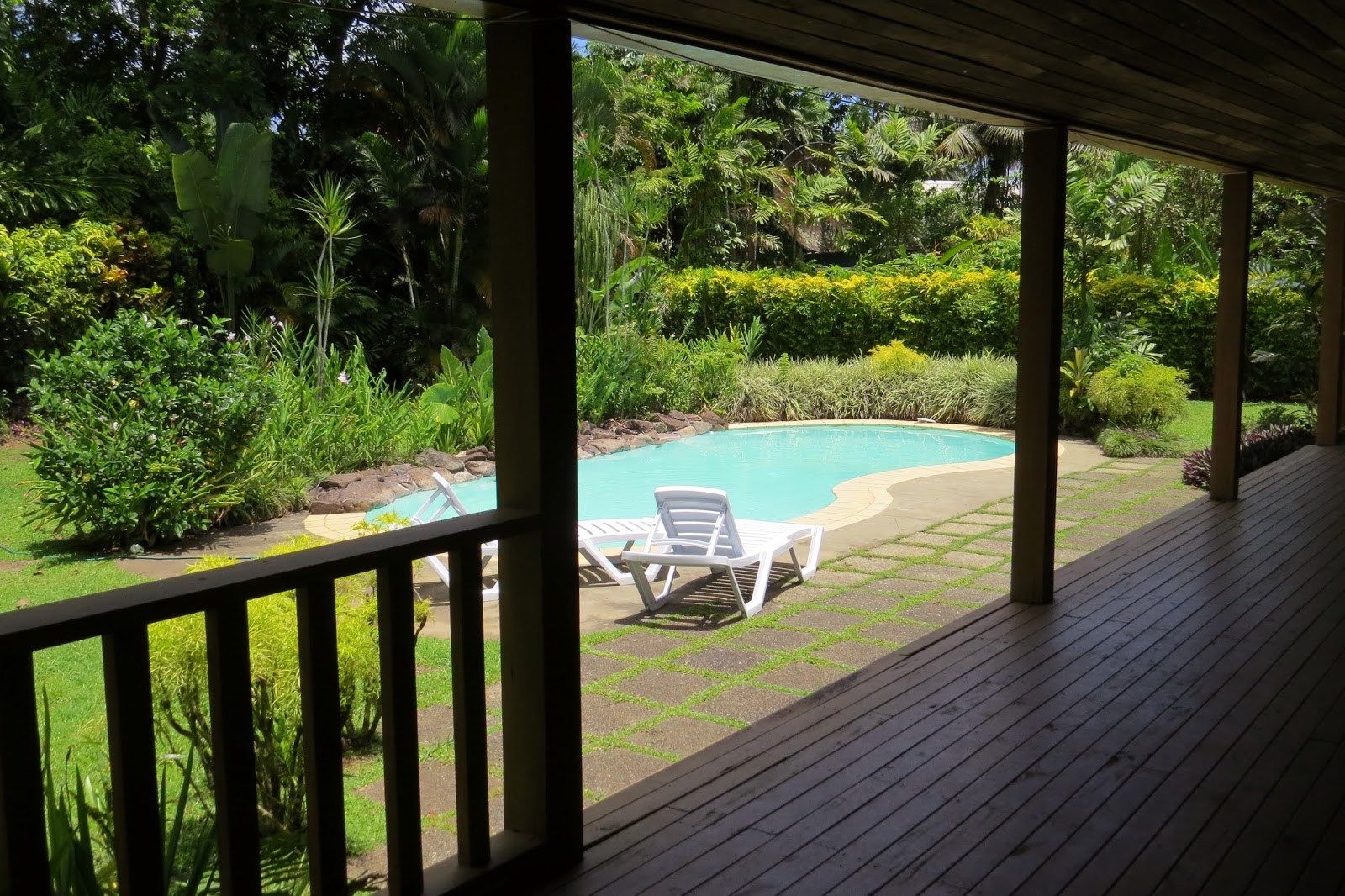
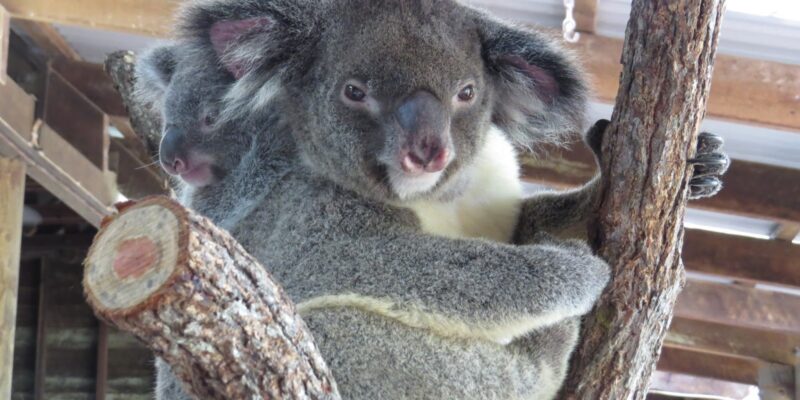

Tomorrow morning, the ship will ease its way into Darwin, Australia, gliding into yet another port on this long voyage. Even after all these years of travel, there’s always a slight flutter in my chest on arrival days, not out of excitement for disembarking, necessarily, but because of the choreography of logistics, immigration procedures, and the small rituals that seem to come with every country we enter.
Even with our e-visas for Australia already applied for and approved months ago, there was still the somewhat tedious, time-consuming process of immigration officers boarding the ship. They set up in the dining room on Deck 5, checking visas and passports, making sure all the papers lined up with whatever boxes needed ticking. And, of course, there was yet another form for us to fill out, because no border crossing ever seems complete without one more form.
While Tom headed down to the Promenade Café with our laptops to settle in for his usual morning routine, I stayed behind in the cabin a little longer, gathering my laundry for the wash-and-fold service. It’s one of those small luxuries of cruise life that I hesitate to admit I’ve come to depend on. Once everything was neatly bagged, I left it for our ever-reliable stateroom attendant and made my way to Deck 5. Fortunately, the immigration line moved quickly, filled with the usual mix of sleepy passengers, early-morning chatter, and the soft hum of people fishing through their bags for the required additional documentation.
Even with today’s clearance complete, this won’t be our last tango with immigration on this trip. Once we reach the airport on December 13, we’ll go through Australian immigration again, not to stay, but to head onward to New Zealand. For anyone who hasn’t traveled this part of the world, the geography and politics can be a little confusing. New Zealand may seem close enough to Australia on a map to assume some shared visa or easy transit. Still, it’s an entirely separate country with its own rules, its own immigration procedures, and its own long-established identity.
And then, in a twist that always makes me laugh at the sheer bureaucracy of travel, when we return to Australia two months later to visit Tasmania, we’ll go through Australian immigration yet again. Tasmania, of course, is part of Australia, a full-fledged state, not a separate nation. It’s an island state located south of the mainland, separated from the mainland by the Bass Strait, rich in rugged wilderness, unusual wildlife, and the charming capital city of Hobart. It always amuses me that entering Tasmania from abroad requires the same formalities as entering Sydney or Melbourne, even though one feels like a frontier of wilderness and the other like the heart of bustling civilization.
For travelers new to all of this, these processes can feel overwhelming. The lines, the passport checks, the obscure forms asking questions that seem oddly specific, are enough to make anyone’s head spin. But for us, after thirteen years of full-time world travel, it’s familiar territory. Not necessarily enjoyable, but predictable, and that predictability helps.
One thing that has been less predictable this past month is the sheer number of time zone changes we’ve endured while cruising. Tom, ever the numbers guy, counted ten in total, including last night’s puzzling 30-minute time zone change as we approached the Northern Territory. These half-hour oddities are always a bit jarring, as if time itself decided to shrug and say, “Why not split the difference?”
Darwin, the capital of the Northern Territory, sits up at the “Top End” of Australia, bordering the Timor Sea. We’ve visited several times over the years, and while it’s a pleasant enough city, the port area doesn’t offer much beyond shopping, most of which will be closed anyway since we arrive on a Sunday. With that in mind, we have no intention of getting off the ship tomorrow. Sometimes, staying aboard is the more peaceful choice, especially when we’ve already been there, done that.
Despite the logistical dance, the time changes, and the length of this voyage, 41 days so far, it’s a long stretch, even for me; we’re still enjoying ourselves. There’s something comforting about settling into shipboard life, finding small routines, and letting the world drift by outside the balcony door.
We’ll share more as we move through this final week aboard Royal Caribbean’s Voyager of the Seas. Until then, may your own travels, wherever they take you, be smooth and pleasant.
Be well.
Photo from ten years ago today, December 6, 2015:

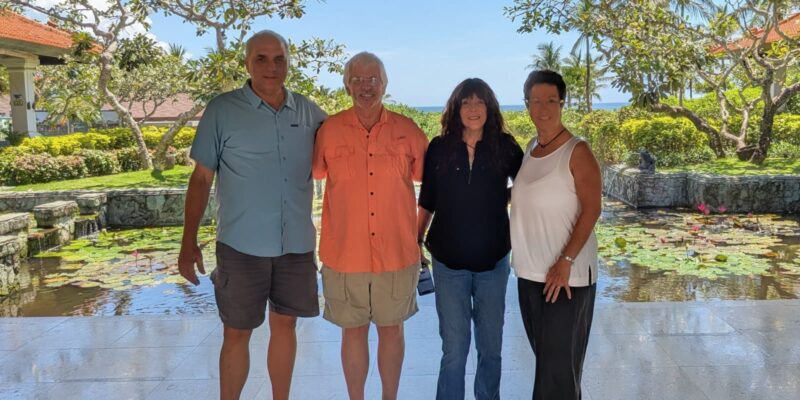

Seeing our dear friends Rita and Gerhard in Bali yesterday was the best possible port-of-call tour we could have imagined, the kind of day that fills the heart in a way no guidebook or excursion ever could. After Rita broke her foot on a tour in Africa a few months ago, she required months of recovery, a period that would test the patience of even the most resilient traveler. But in true Rita fashion, she and Gerhard decided to spend those months somewhere beautiful, warm, and soothing to the soul. They chose wisely. They’ve been tucked away at the exquisite Grand Hyatt Bali in Nusa Dua, a massive, lush, undeniably five-star resort that has been their temporary home these past few months.

The resort itself was a sight to behold, sweeping grounds, carefully manicured gardens, and the kind of tropical serenity that makes you wish you could slow the day down just a little more. But as lovely as it all was, what mattered most was being with them again. There’s something about familiar friends, the ones who have walked alongside you through years, continents, and countless stories, that makes even the simplest moments feel elevated. Yesterday was one of those days.

They picked us up in a taxi at the pier at 11:00 am, and somehow, despite the crowds and the bustle of disembarking passengers, we spotted each other instantly. The four of us piled into the vehicle, as no time had passed at all, and made the easy 20-minute drive to the resort, chatting nonstop the entire way. Upon arrival, we were given what they jokingly called “the Grand Tour,” and truly, it was. Their suite was nothing short of phenomenal, with breathtaking views, airy spaces, and that intangible sense of tranquility that only a few places in the world seem to capture.

As we wandered through the property and admired their temporary home, we slipped right back into our usual lively, animated banter. It’s funny how friendships like this move effortlessly between laughter, reflection, gentle teasing, and deeper conversation without missing a beat. We caught up on their months in Bali, on our recent travels, on the mundane and the extraordinary. It was wonderful, comforting, energizing, and grounding to be with them once again.

Eventually, we made our way to lunch at one of the resort’s stunning restaurants, where the setting was as delightful as the company. The four of us savored a delicious meal while continuing our rewarding conversations, the kind that stretch well past the last bite and leave you feeling fuller in every sense.

I found myself surprised—and grateful—for how well I was able to walk. Rita and I held onto one another as we navigated the massive resort, two women in recovery, encouraging each other with each careful step. Still, we managed to rack up about 5,000 steps, an achievement that left us both smiling. It felt good to be outdoors, even wrapped in Bali’s signature heat and humidity, the air thick but somehow still comforting.

As the afternoon began to fade, we knew it was time to return to the ship. Parting was softened by the knowledge that we’ll see them again in about five months, this time on their home turf in Vancouver, Washington, when we’ll be back in the US for grandson Miles’ graduation. The thought of another reunion is yet another reason to look forward to our trip to the US.

Once back on board, we slipped into our usual routine, dressing for the evening and heading to the R-Bar by 5:30. The routine of ship life after a day ashore is reassuring and comforting. We settled in for another delightful evening, enjoying the new and familiar faces, easy conversations, and gentle buzz of fellow passengers winding down after their own adventures. Dinner followed at a shared table in the main dining room, the perfect ending to a day that felt both full and restorative.

It was, in every way, a memorable day—one that reminded us how lucky we are to have friends who feel like home, no matter where in the world we meet them.
Be well.
Photo from ten years ago today, December 5, 2015:

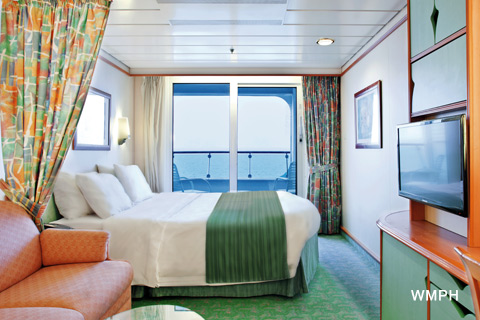

Three weeks after I injured my knee in that unfortunate stumble in the corridor, we decided not to push the issue when the ship didn’t offer us a different cabin closer to the elevators. Perhaps we could have pressed it harder—others might have—but something in me resisted making a fuss. I told myself that the extra walking would serve as unplanned physical therapy. With that mindset, we unpacked, settled in, and accepted our location at the distant aft section of the ship. The cabin itself was perfectly fine, comfortable enough for these 12 days, and our cabin steward, “Hi,” has been nothing short of excellent, warm, attentive, and determined to keep everything spotless and organized.
Unpacking this time was easier than usual. After all, this final segment of the 47-night journey is the shortest of the three, so we didn’t need to unload every last item as we had for the earlier legs. Now, after several days, our things have found their places, the cabin feels like ours, and surprisingly, the long walks to the elevators have not been the burden I feared. If anything, they have strengthened my knee and encouraged me to move more than I might have otherwise. Funny how frustrations sometimes reveal themselves to be gifts.
This third leg of the cruise is noticeably busier, packed, really, with about 30% more passengers than the earlier two segments. I’d estimate that roughly 75% of them are Australian, with the remainder traveling from a mix of other countries. As far as we can tell, there are only a handful of Americans aboard. With these increased numbers, every venue feels hotter and louder, and the previously quiet corners around the ship now bustle with activity. We’ve also seen a significant increase in families with children, many traveling for the Christmas holidays, and quite a few college-age passengers filling the pool deck and the restaurants.
There’s no question that the atmosphere on the first two legs suited us better, quieter, lower-key, and more spacious. But that’s travel: circumstances shift, crowds change, and you adjust. And even amid the noise and heat, familiar friendships have brought bright pockets of joy. We’ve loved reconnecting with Michelle and Sheryl, whom we first met years ago on another cruise and later visited when we had a port of call in Perth. Michelle and her husband Carlo picked us up for a beautiful day of sightseeing, and spending time with them again now reminds me how fortunate we are to have gathered friends around the world like seashells from different beaches.
We’ve also met several lovely Australians at trivia and again at dinner over the past two evenings since they boarded in Singapore. I continue to believe that travelers share a certain unspoken kinship—an appreciation for stories, discovery, and a willingness to say yes. Every time we sit down at a communal table, I’m reminded how small the world truly becomes when strangers allow themselves to become friends.
But the highlight of this week is still ahead. Tomorrow, December 4, when the ship docks in Benoa, Bali, Rita and Gerhard will be waiting at the port at 11:00 am to pick us up. We’re spending the day with them, catching up, and returning well before our late-afternoon sail-away. I already feel the flutter of anticipation to see them once again. What a gift to share pieces of this journey with people we love.
It has been a remarkable run of reunions: first, Louise and Danie in Cape Town; then Ulla on the second leg; now, Michelle and Sheryl; and tomorrow, Rita and Gerhard. To think of all these lives woven into our own, thread by thread, story by story, reminds me how deeply this travel life has expanded our world. We never, ever take these friendships for granted.
Today is a calm sea day, the ocean flat and silvery as we move steadily toward Bali. At the moment, we’re seated at the Promenade Café, where, no matter how crowded the ship becomes, we’ve surprisingly always managed to find our same cozy banquette corner. I type away on today’s post while Tom watches U.S. football on his laptop with his earbuds in, shaking his head every so often when a play surprises him. It is an odd little rhythm, but after so many years together, it feels like home.
For all the extra passengers, extra noise, and extra walking, we have no complaints. We are grateful, truly grateful, for these long stretches at sea and for this chance to experience the world slowly, one port, one friendship, one sunrise at a time. And yet, part of the joy is also looking ahead: tomorrow with Rita and Gerhard; and in only ten days, our upcoming lovely home in Kaiwaka, New Zealand. Another chapter is waiting.
So we carry on, content, hopeful, and eager for whatever comes next.
Be well.
Photo from ten years ago today, December 3, 2015:

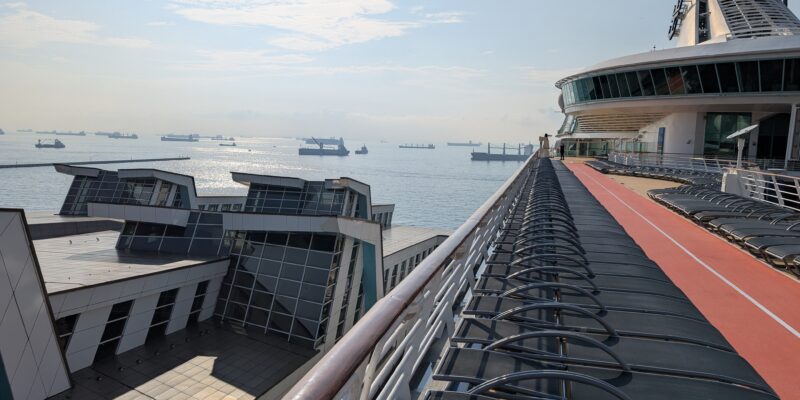
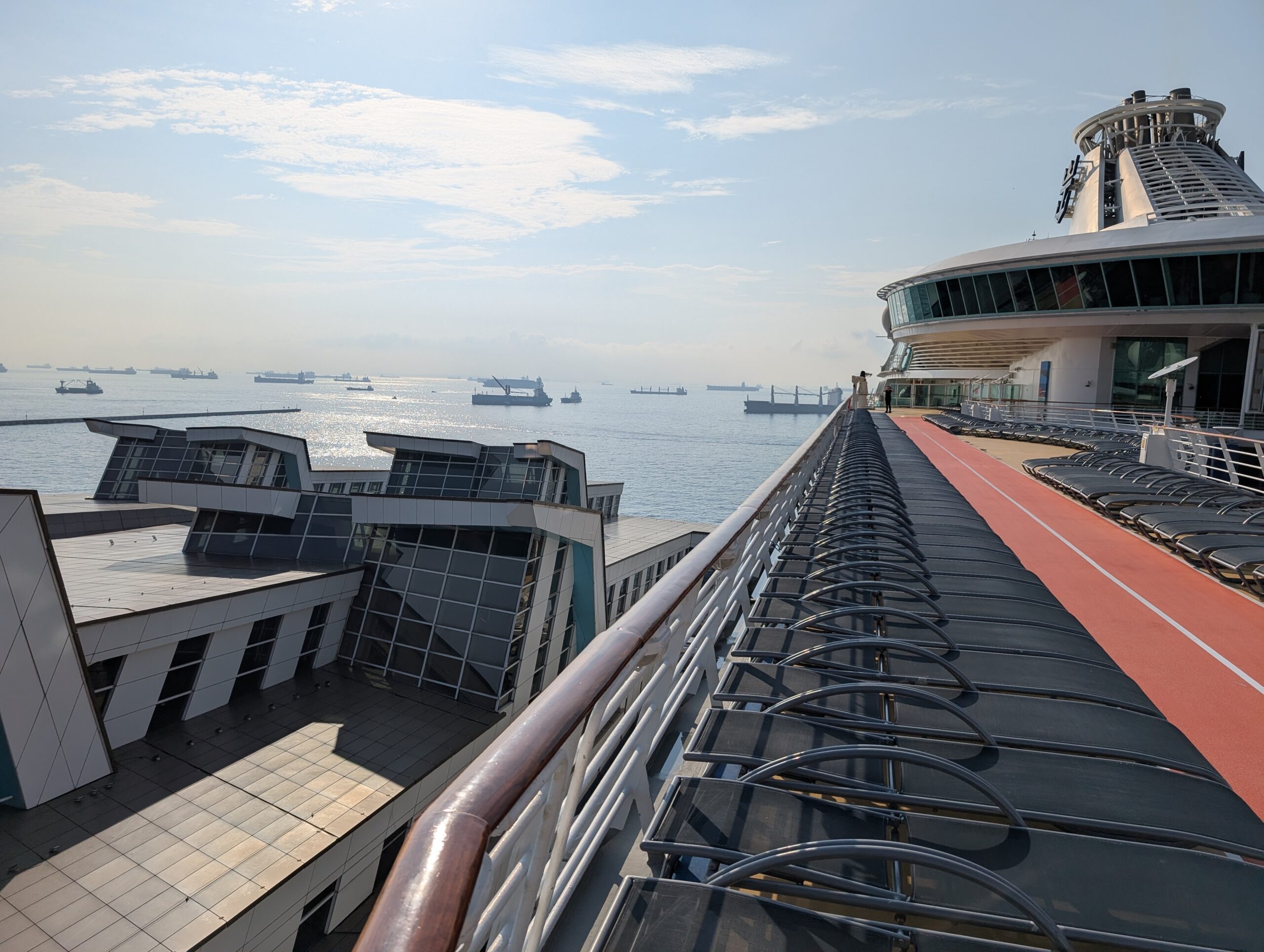
The last time I remember looking at the clock, it blinked back at me with an unforgiving 4:00 am. Only three hours later, I heard Tom getting up, his careful footsteps and the sound of the shower telling me morning had arrived far too soon. Knowing we had to check in at the main dining room by 9:00 am as consecutive passengers, I dragged myself out of bed as soon as he was done in the bathroom. Those mornings when sleep has barely graced me always feel like wading through molasses—the simple act of showering and getting dressed becomes a slow, deliberate process, each step requiring more focus than it should.
I stuffed my pajamas and a few last-minute odds and ends into my bag, grateful that at least packing was minimal for this short transition day. Usually, anticipation of travel or logistical tasks doesn’t disrupt my sleep—after all these years on the road, constant movement has become second nature. But last night’s inexplicable insomnia threw me entirely off balance.
After checking in with our Indonesian and Australian e-visas in hand, we made our way to the Promenade Cafe, where the aroma of fresh coffee gave me the slightest boost of hope. We settled into our usual corner, hopeful we could get started on today’s post, but quickly discovered the ship’s WiFi had been shut off during the disembarkation and embarkation process. Fortunately, our T-Mobile hotspot came to the rescue. It wasn’t lightning fast, but it worked well enough for us to begin catching up. As soon as the ship’s WiFi comes back online—any minute now—we’ll switch back, since we’ve already paid for the service for this final leg of our back-to-back cruise.
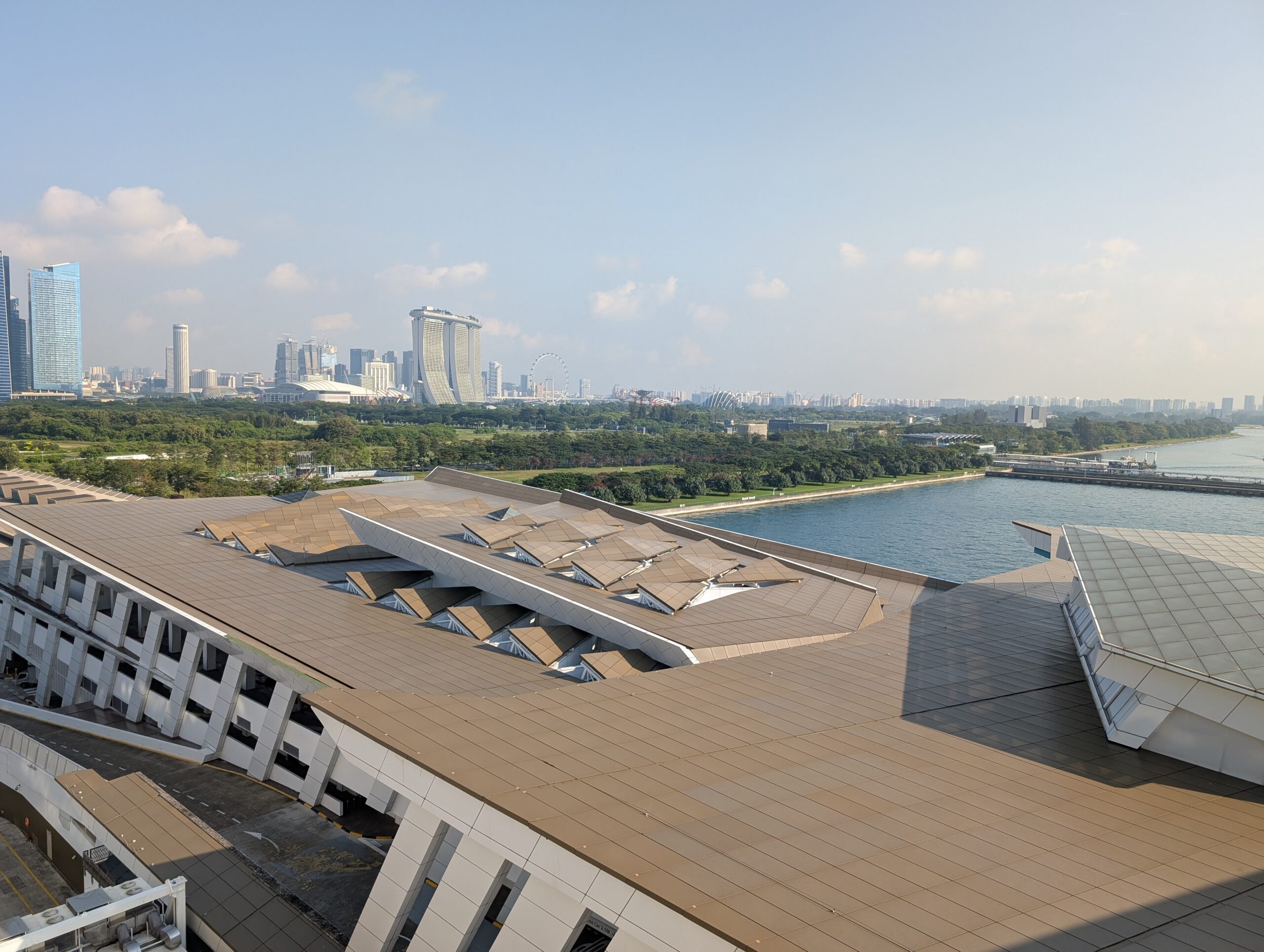
From our seats, we watched the familiar rhythm of turnaround day unfold: departing passengers rolling their suitcases toward the gangway, crew members resetting stations with the quiet efficiency we’ve come to admire, and the early trickle of new passengers boarding. There’s always a comforting predictability to this process, a sort of intermission between chapters of ship life.
While we waited, our dear friends Diana and Peter stopped by the table to say goodbye. In just a few weeks, casual greetings in the R-Bar and main dining room had grown into warm, easy conversation, the kind of connection that feels so natural you forget it’s only been a short time. They’re hoping to visit us in Marloth Park next August, an idea that feels both exciting and surreal. We genuinely hope it works out for them; sharing that extraordinary place with friends is always such a joy.
We also said goodbye to Salli, Barbara, and several others we’ve met along the way. It always amazes me how ships create their own little temporary communities. Each voyage becomes a microcosm of shared routines, passing familiar faces at the Promenade Cafe, seeing the same folks at dinners, and exchanging travel stories at random moments. These friendships, whether brief or long-lasting, become part of the fabric of our journey.
We’re still waiting to hear whether we’ve been moved to a more suitable location on the ship. If not, we’ll have to accept the reality of the distant cabin on Deck 6, tucked so far from the elevators that it feels like a daily pilgrimage, especially with my knee still acting up.
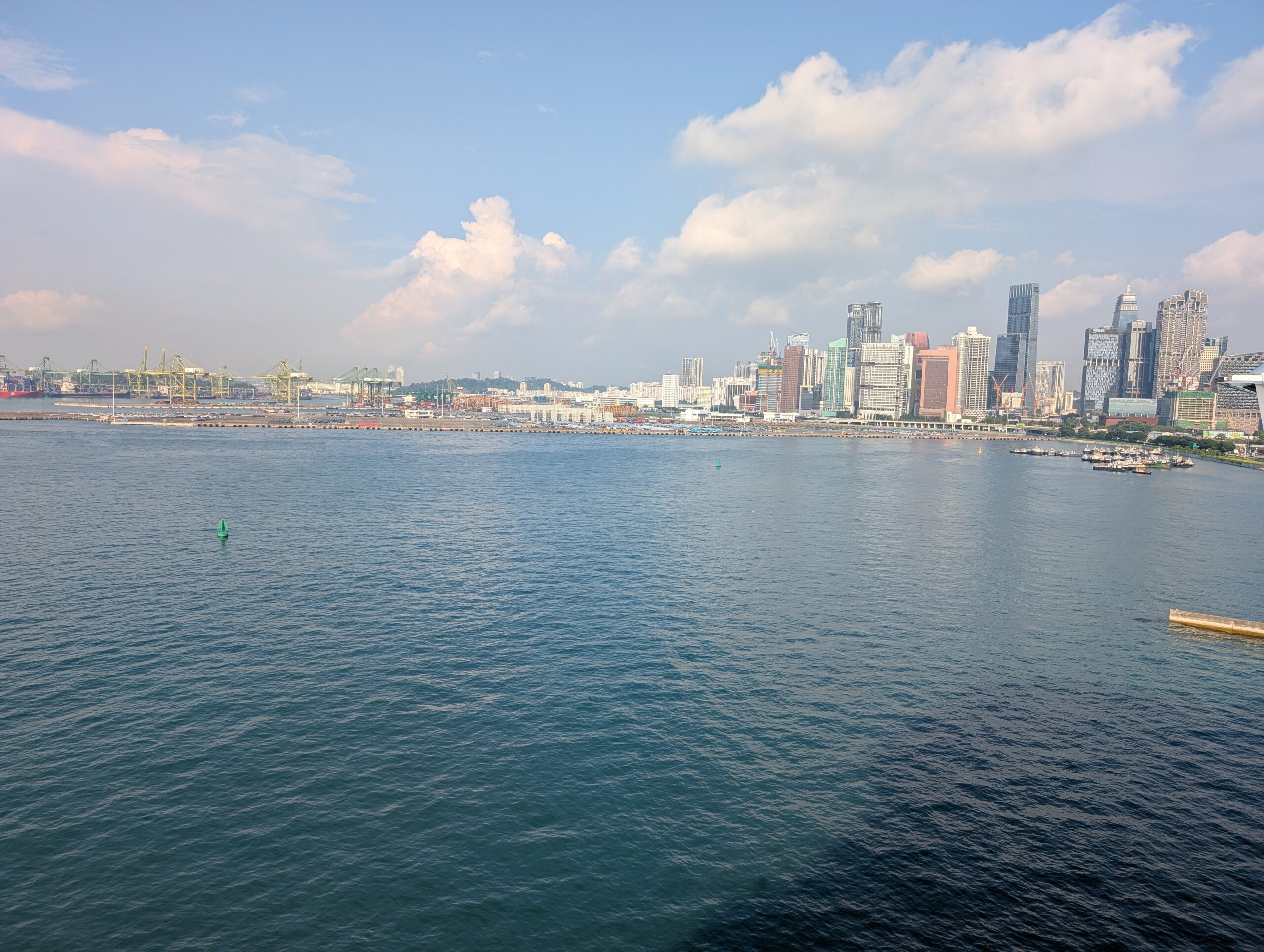
There’s something about cruise days like this, turnover days, full of new faces and rolling suitcases, that makes everything feel temporarily suspended. The crew is busy preparing, the ship hums with anticipation, and we’re simply waiting, caught between hope and resignation. We won’t know anything until the last of the new passengers has boarded and we’re minutes from casting off from Singapore.
Until then, all we can do is sit with the not-knowing, our bags waiting to be unpacked, our minds half-settled, reminding ourselves that after years of living on the move, flexibility isn’t just a skill. It’s our daily practice.
Once the newly arriving passengers board, we’ll see our old friends Michelle and Sheryl, who are boarding here in Singapore. It will be fun to see them again since our last get-together in 2018.
Despite the exhaustion tugging at me today, there’s a soft comfort in knowing that even sleepless nights and groggy mornings still find their way into the larger, ongoing story of our travels. Not every day is seamless or restful, but each one carries its own small mosaic of experiences… goodbyes, quiet frustrations, and tiny triumphs that remind us why we embrace this ever-changing life at sea and also while traveling on land.
Be well.
Photo from ten years ago today, December 1, 2015:



Over the years of cruising, we’ve learned many lessons, some the hard way, and recently, one of those lessons resurfaced with an uncomfortable thud. When we booked this cruise, we chose what’s called a guaranteed cabin, a term that sounds promising, almost luxurious in a vague sort of way, as if it means you’re assured something special. In theory, that’s the appeal: you’re guaranteed a cabin within the category you booked, or possibly even an upgrade if availability allows.
What they don’t explain quite so clearly, at least not in a way that resonates until you live it, is that while you’re guaranteed a cabin, you’re not guaranteed to like where it is. We knew this possibility existed, but figured that saving over US $1000 was worth any potential challenges. Little did we know, I’d fall and injure my knee. Up to that point, walking on the ship had worked out well for me, and I wasn’t experiencing any issues.
A guaranteed cabin means you allow the cruise line to assign your stateroom at their discretion. They select the cabin for you, sometimes not until shortly before sailing or even after boarding. For those willing to roll the dice in exchange for a lower fare or a shot at a surprise upgrade, it’s an enticing prospect. For travelers with no mobility issues or who don’t mind being at the far end of a long corridor, it might be a non-issue. But for us, especially right now, it’s proving to be a complication we wish we’d avoided.
As many of you know, my knee is still painful almost three weeks after the fall. Walking long distances feels like dragging a cement block through molasses, slow, painful, and exhausting; however, it’s improved considerably over the past week. The cabin we’ve been staying in has been reasonably close to the elevators, a blessing I’ve appreciated each time I’ve hobbled down the hallway. But because we’re consecutive passengers, continuing on for the next segment that begins tomorrow in Singapore, our guaranteed cabin status now means we must move. And not just move a few doors down, but move to another location entirely, much farther from the elevators.
We went to guest services a few days ago, hoping to plead our case. Surely, we thought, they could make a note, or make a swap, or at the very least commit to finding us something closer. After all, we aren’t asking for an upgrade, only a location that doesn’t require an Olympic-level trek. The young crew member behind the desk was pleasant but immovable. She explained that they simply couldn’t promise anything until the new batch of passengers boards tomorrow in Singapore, and they’ve seen which cabins open up after no-shows and cancellations. Only then, they said, might a more accessible cabin become available, but there’s no certainty.
This means that tonight, between 7:00 pm and 11:00 pm, we must pack everything, every shoe, every cable, every miscellaneous item that has slowly migrated across the small surfaces of this cabin, and place our luggage outside our door to be taken away. They will move our bags to whatever stateroom we’ve been assigned overnight. We won’t know which cabin that is until sometime tomorrow, when guest services calls or leaves a message on the stateroom phone. And until we know where we are assigned, we won’t have our luggage or access to the room.
Adding to the absurdity, none of us, including those who are continuing on the next voyage, are allowed access to our new cabins until 1:00 or 2:00 pm tomorrow afternoon, after they’ve completed the cleaning and preparation for the next round of guests. So we will spend tomorrow morning and early afternoon wandering the ship with whatever we keep in our carry-on bags. I suppose we’ll stake out a quiet corner somewhere with our laptops and wait for the news.
Tonight, when we pack, we’ll have to think carefully about what needs to stay with us for the night: my prescriptions, pajamas, a change of clothes, and minimal toiletries, including our laptops and chargers. Anything else will disappear into the abyss of luggage carts until sometime tomorrow. It feels strangely vulnerable, this temporary state of limbo, reliant on forces entirely beyond our control.
For now, I’m frustrated and, admittedly, a little embarrassed that we didn’t foresee this inconvenience. In hindsight, we should have booked a specific cabin assignment to ensure a location that worked for my current limitations. That extra certainty would have been well worth whatever price difference existed.
Lesson learned, once again: a guaranteed cabin doesn’t guarantee convenience, comfort, or location. It guarantees only a place to sleep…somewhere.
We’ll breathe easier once tomorrow is behind us, when we’ve unpacked yet again and settled into whatever cabin fate and the cruise line assign us. Until then, we brace ourselves, we pack, we hope, and we wait.
Be well.
Photo from ten years ago today, November 30, 2015:

We respect user data and meet all necessary privacy law obligations.
Websites store cookies to enhance functionality and personalise your experience. You can manage your preferences, but blocking some cookies may impact site performance and services.
Essential cookies enable basic functions and are necessary for the proper function of the website.
